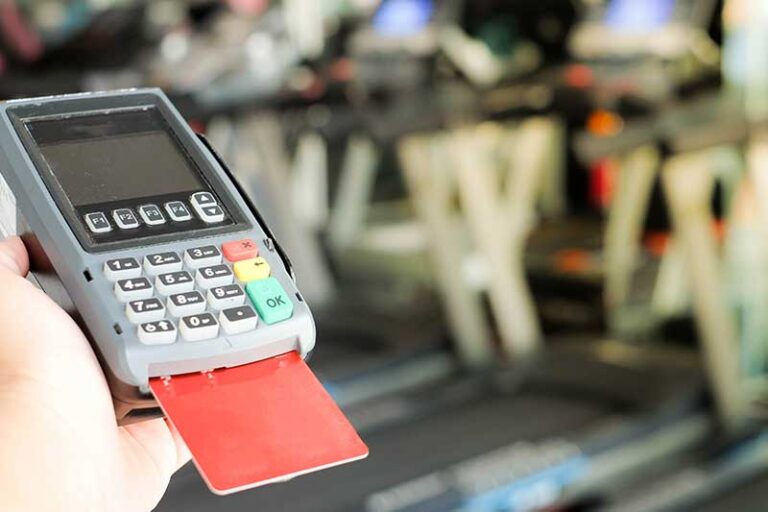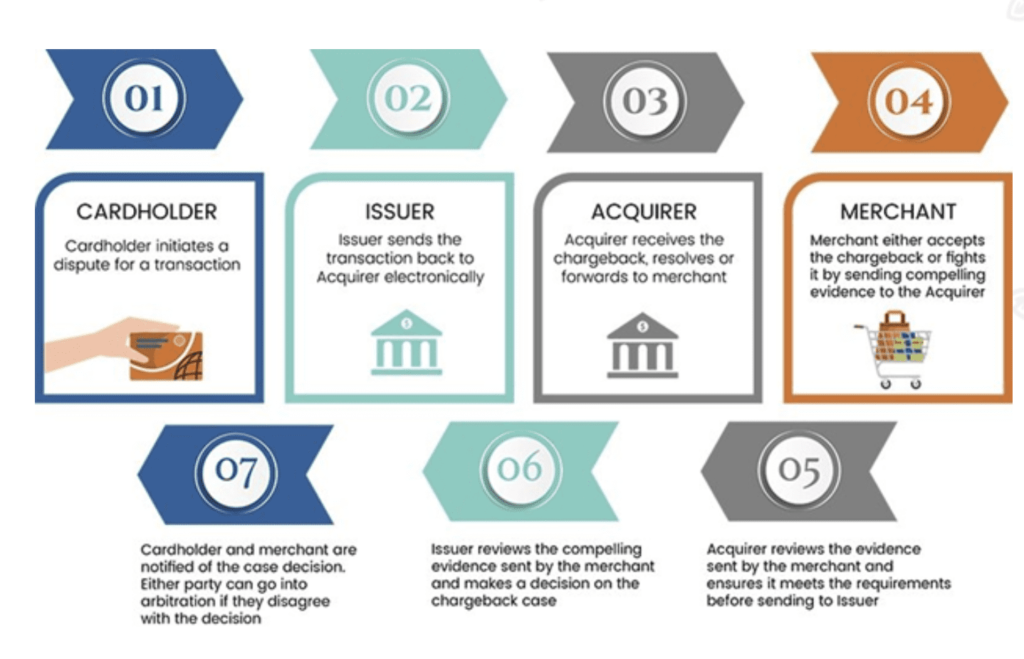As a business owner, there’s a good chance that you’ve had to deal with chargebacks at some point since you started accepting credit cards.This is a problem that you can’t afford to ignore. In fact, chargebacks are growing at a rate of 20% per year, costing merchants worldwide $4 billion in revenue.
But beyond the credit card merchant fees associated with these frustrating penalties, most merchants don’t realize the actual damage of a chargeback. Not only are chargebacks costly, but they can also damage your company’s reputation and harm the relationship with your credit card processing company.
Unfortunately, chargebacks have become just another part of running a business. It’s crucial that you understand how chargebacks work so you can learn how to manage and prevent them.
Below is a complete guide to explain everything you need to know about chargebacks.
What is a Chargeback?
A chargeback is the reversal of funds transferred between the merchant and consumer. A chargeback is not a return. With a return, merchants refund the customer directly when goods are given back. This is a straightforward process and doesn’t involve the banks.
In simple terms, the customer takes back the payment that they’ve already made to a merchant.
But chargebacks are issued by the bank. The chargeback process starts when a customer disputes a charge by contacting the issuing bank of their credit card. Read more about the difference between chargebacks and refunds here.
Funds will be transferred out of the merchant account almost immediately. In some cases, you may not even know that a chargeback has been initiated until after it’s been processed.
If your business has frequent chargebacks, your credit card processing company may classify you as a “high risk merchant.” This can result in higher credit card processing fees, funds being put on hold, or your merchant account getting shut down.
Here’s a closer look at the chargeback process, including all of the players involved:
Each chargeback filed against your business affects your chargeback ratio. That ratio determines your company’s risk factor and your ability to process credit card payments.
Chargeback Fees – How Much Are They?
The average chargeback fee is around $25. Depending on the bank, chargeback fees can range anywhere from $20 to $100.
Chargeback fees are not based on the cost of the initial transaction, and they’re imposed by the bank. Merchants are hit twice when it comes to paying for chargebacks. In addition to losing the amount that was transferred back to the customer, you must also pay a penalty.
Some of you might see the terms “chargeback item” on your statements. This refers to the product or service that’s being disputed. For example, let’s say a customer buys a hat from your retail store, but they get charged twice and dispute the second charge. The hat would be considered the chargeback item. The chargeback item should not be a separate charge on your merchant statement. The chargeback fee should remain the same, regardless of what the chargeback item is.
Chargeback Codes – (Chargeback Reason Codes Explained)
If you were recently issued a chargeback, you might be wondering why.
All chargeback reason codes vary by bank network. But for the most part, every chargeback can be classified into one of four general categories:
- Technical — Expired authorization, insufficient funds, or bank processing error.
- Administrative — Duplicate billing, incorrect amount billed, or refund never issued.
- Quality — Customer claims the goods or services were never received as promised.
- Fraud — Customer claims they did not authorize the purchase.
Consumers typically have 60 to 120 days after the purchase to file a chargeback. Merchants usually have 45 days to resolve or dispute it. The merchant processor will review the claim and determine whether or not mediation is required.
Refer to the following resources for more specific chargeback codes by card network:
- Visa Chargeback Codes
- Mastercard Chargeback Codes
- American Express Chargeback Codes
- Discover Chargeback Codes
Types of Chargebacks
Generally speaking, all chargebacks can be segmented into one of the following three categories:
- Fraud – Occurs when a cardholder’s account has been compromised and an unauthorized transaction is made.
- Friendly Fraud – When a customer doesn’t recognize a charge on their credit card statement and mistakenly reports it as fraud, even though they actually made the purchase. Disputing a charge instead of filing a return also falls into the friendly fraud category.
- Merchant Error – Sometimes the merchant will accidentally charge customers twice for something or charge them for the wrong amount. This can also happen if you ship a product to the wrong address, and the customer never receives what they paid for.
Understanding the different types of chargebacks will make it easier for you to identify why you’re getting chargebacks and how to prevent them. For example, if most of your chargebacks are due to merchant error, you’ll need to re-evaluate your internal systems and make sure your staff is trained properly.
How to Prevent Chargebacks
Unfortunately, chargebacks are inevitable. Nobody is 100% protected from chargebacks. Fighting back against chargebacks has proved to be a losing battle as well.
While 80% of merchants dispute illegitimate chargebacks, just 18% say they win the majority of their claims.
However, there are specific steps you can take to prevent chargebacks from happening in the first place. We’ve identified and explained the best chargeback prevention tactics below.
Customer Service
You need to set up a customer-friendly return policy. Make it clear that you accept returns and you’re willing to appease unsatisfied customers. 80% of consumers say they filed a chargeback because they didn’t have time to request a refund from the merchant.
If the return process is too cumbersome or expensive (restocking fees, shipping fees, etc.), the customer may resort to filing a chargeback.
Transparency
Every customer should be given an itemized receipt with a full explanation of the charges. The receipt should also describe how the charge will appear on the customer’s credit card statement. Make sure that the full name of your business appears on the billing statements.
Let’s say your company’s name is John’s Pizza House. If the credit card charge comes from JYZ Holdings, the customer may not recognize the transaction and file a chargeback.
Monitor Each Transaction
According to a recent Experian Fraud Report, just 40% of businesses say they are very confident in their ability to detect fraudulent activity. Your processing company can provide you with tools to help you identify and prevent fraudulent charges. Examples include:
- Obtaining signatures from customers
- Credit card security verification codes
- Address verification system
- Online fraud monitoring tools
If you have an ecommerce store, shipping problems are a leading cause of chargebacks.
According to a recent study, 26% of customers filed a chargeback because their product never arrived. An additional 15% of chargebacks were filed because the wrong product was shipped.
Make sure you’re using a reliable delivery service that ships on time. We’re living in an era where Amazon has raised the bar in terms of shipping expectations. If your products are taking two weeks to ship, the customer may file a chargeback while the order is in transit.
Who Pays For a Chargeback?
Chargebacks are ultimately paid for by the merchant that processed the transaction. Once a chargeback has been issued, the funds are forcibly reversed by the card issuing bank.
Sometimes, the issuing bank may cover the cost of the chargeback by immediately issuing a credit to the cardholder during an active chargeback claim. But the payment will ultimately come from the merchant’s bank account, facilitated by the payment processor.
In addition to paying for the transaction amount, there’s a high likelihood that the merchant will also pay a chargeback fee penalty assessed by their processor.
How to Dispute a Chargeback
Merchants have the right to fight chargeback claims that are not legitimate. Each card network has different rules as to how long merchants have to dispute a chargeback, but most networks require a 30-day response time after a chargeback is filed.
Here’s the best way to dispute a chargeback:
First, gather all relevant transaction details (receipts, customer details, customer contact history, etc). Compile the evidence to show the transaction was legitimate, including delivery confirmation, authentication reports, return policy, your company’s terms and conditions, and evidence that the customer agreed to your terms and conditions.
Don’t go crazy with pages and pages of legal copy here. Every chargeback dispute gets reviewed by a real person. So bombarding them with tons of fine print won’t necessarily work in your favor. You can always highlight certain parts of the terms that are specifically related to the chargeback reason code for this particular instance.
Along with the related evidence you’ve gathered, submit a rebuttal that explains why you’re disputing the transaction in simple terms. Again, keep this short, sweet, and directly related to the point. Don’t go into tons of detail about “evidence” that’s unrelated to the chargeback reason code.
Once you’ve submitted your dispute, there’s not much else you can do besides sit back and wait for a decision. As previously mentioned, card networks typically side with the cardholder and leave merchants holding the bag. But it’s still worth disputing chargebacks if you feel you’re not in the wrong. Just don’t be shocked if they don’t always go your way.
Final Thoughts on Credit Card Chargebacks
Chargebacks are frustrating. They are an inevitable part of accepting credit cards in today’s world. No merchant is immune to chargebacks, regardless of your company’s size or industry.
With all of that said, it’s important that you understand how chargebacks work and the impact they have on your business. While you can’t stop chargebacks altogether, you can definitely take steps to prevent them in the first place.
To learn more about other credit card processing fees and lowering your costs, check out our complete guide to credit card processing.
Are you paying too much for credit card processing fees? Here at Merchant Cost Consulting, we’ll give you a free audit and analysis to see how much you can save. Contact us today for a free consultation.


